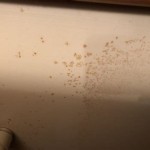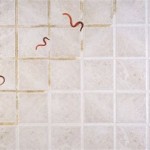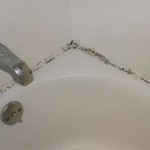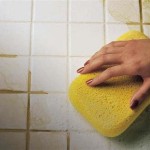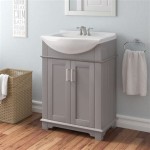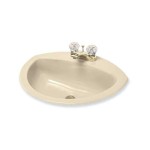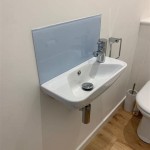Black Mold Around Bathroom Sink Drain: Causes, Risks, and Remediation
Black mold, scientifically known as Stachybotrys chartarum, is a type of fungus that thrives in damp, humid environments. It is commonly found in bathrooms, particularly around the sink drain, where water frequently accumulates and evaporates slowly. Black mold can pose serious health risks, especially for individuals with respiratory issues or allergies. This article will delve into the causes of black mold growth around bathroom sink drains, discuss its potential hazards, and provide guidance on effective remediation strategies.
Causes of Black Mold Growth Around Bathroom Sink Drain
Black mold growth in bathroom sinks is primarily attributed to the presence of moisture and a source of organic matter. The following factors contribute to its proliferation:
- Leaking Pipes: Faulty or leaking pipes beneath the sink can create a constant source of moisture, providing an ideal breeding ground for mold.
- Poor Ventilation: Inadequate ventilation in the bathroom allows moisture to linger, creating a humid environment conducive to mold growth.
- Hair and Soap Scum: Hair, soap residue, and other organic matter accumulate in the sink drain, providing nourishment for mold spores.
- Water Puddles: Standing water around the sink, whether from spills or leaks, can create a moist surface for mold to flourish.
Health Risks Associated with Black Mold
Exposure to black mold can trigger a range of health issues, particularly in susceptible individuals. Some of the potential health risks include:
- Respiratory Problems: Mold spores can irritate the lungs, leading to coughing, wheezing, and difficulty breathing, especially in individuals with asthma or other respiratory conditions.
- Allergies: Mold spores can trigger allergic reactions, resulting in sneezing, runny nose, itchy eyes, and skin rashes.
- Neurological Symptoms: In some cases, prolonged exposure to black mold can lead to neurological symptoms such as headaches, fatigue, and memory problems.
- Mycotoxicosis: Black mold can produce mycotoxins, which are poisonous substances that can cause a variety of health issues, including liver damage and immune system suppression.
Remediation Strategies for Black Mold in Bathroom Sinks
Addressing black mold growth around the bathroom sink drain requires a multifaceted approach that focuses on both removal and prevention. The following steps can effectively remediate the problem:
1. Identify and Address the Moisture Source
The first step is to determine the source of the moisture. This may involve inspecting pipes for leaks, ensuring proper ventilation, and addressing any standing water issues. Repairing leaks and improving ventilation are crucial to prevent future mold growth.
2. Clean and Remove Mold
Once the moisture source has been addressed, it's time to clean and remove the existing mold. This should be done carefully, as disturbing mold can release spores into the air. Always wear a mask, gloves, and protective clothing when working with mold.
- Surface Cleaning: Use a bleach solution (mix one part bleach with ten parts water) to clean affected surfaces. Apply the solution with a scrub brush and allow it to stand for ten minutes before rinsing thoroughly.
- Mold Removal: For larger areas of mold growth, consider using a mold removal product available at hardware stores. Follow the manufacturer's instructions carefully.
- Disposal: Dispose of mold-contaminated materials in sealed plastic bags to prevent the spread of spores.
3. Prevent Future Mold Growth
After removing the mold, take steps to prevent its recurrence. This includes:
- Regular Cleaning: Regularly clean the bathroom sink and drain with a bleach solution to kill mold spores and prevent their growth.
- Improved Ventilation: Ensure adequate ventilation in the bathroom by using a fan or opening a window during and after showering or washing.
- Moisture Control: Wipe up spills and water puddles immediately to prevent moisture buildup.
- Regular Inspections: Regularly inspect the bathroom sink and drain for any signs of moisture or mold growth.
It is important to note that black mold removal and remediation should be handled with caution. If you are unable to address the problem yourself or suspect extensive mold growth, it is advisable to consult with a professional mold remediation specialist for assistance.

What Causes Black Mold In Sink Drains How To Get Rid Of It

5 Signs That You Have Mold Growing In Your Sink Drain

How To Clear The Black Slime From Your Bathroom Sink

What Is Black Sludge In A Sink Drain Birnie Plumbing Drains

How To Clean Mold In Bathroom Basin

What Is The Black Stuff In My Shower Jdog Carpet Cleaning Floor Care

How To Clean Black Sludge In Bathroom Sink Drains Hunker Cleaning House Tips

What Causes Black Mold In Sink Drains How To Remove It

Plumbing Expert Shares How To Unblock A Sink Using Household Items Without Plunger Express Co
What The Heck In This Ugly Black Stuff My Wife Has Been Complaining About A Nasty Smell Coming From Her Bathroom Sink Since We Moved Into Our New House Two Years Ago
Related Posts

